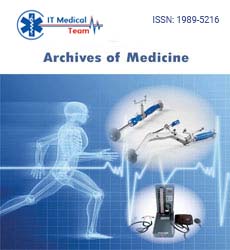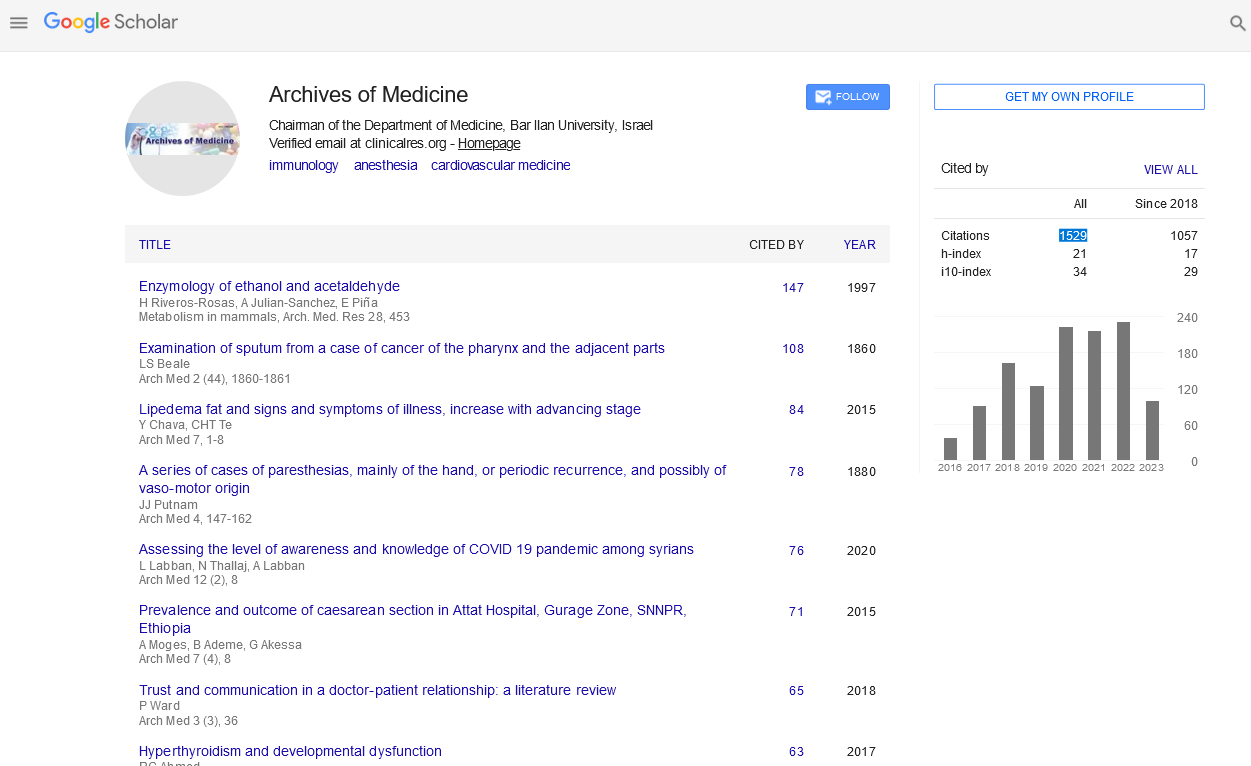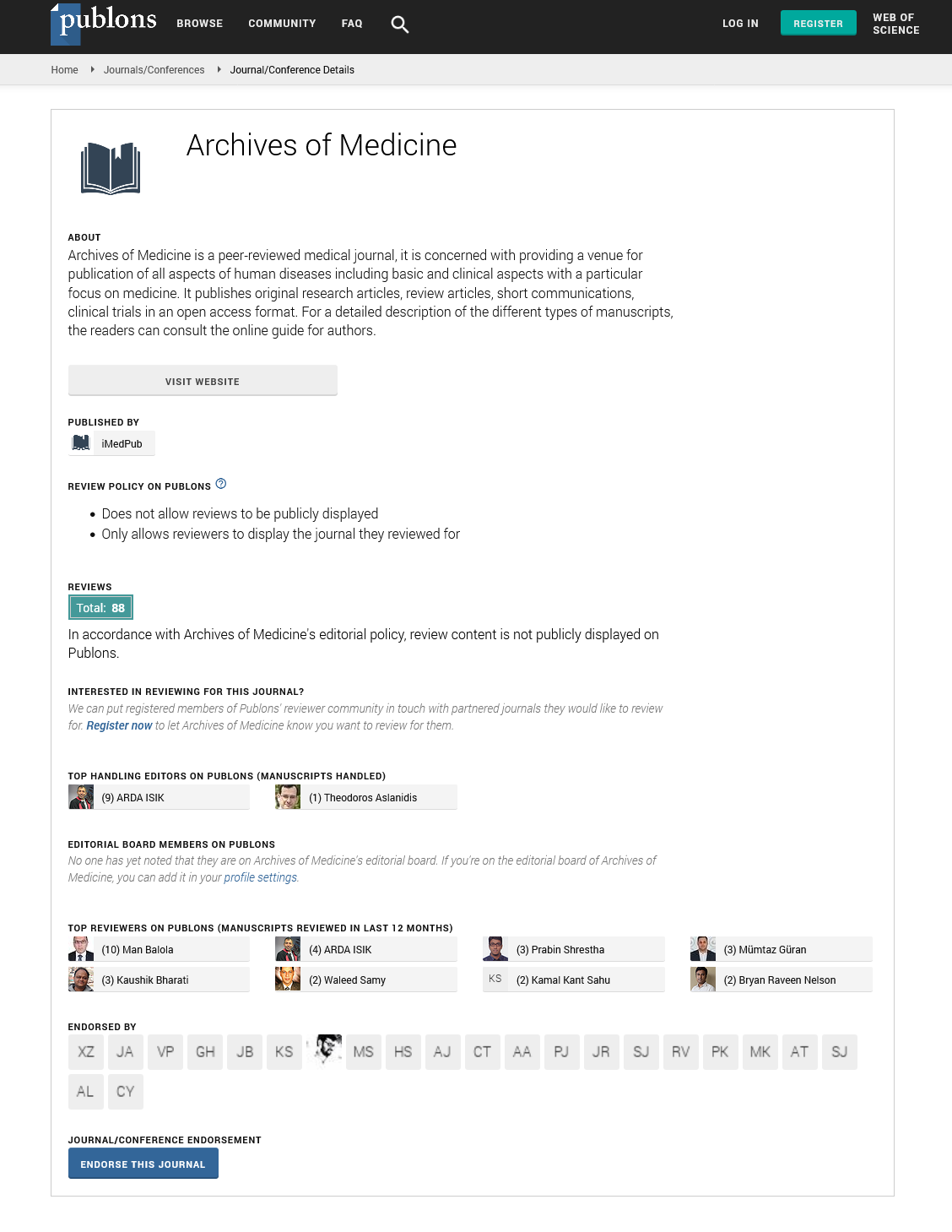Dogan Zeytun*
Department of Internal Medicine, University of Health Sciences, Turkey, Antalya, Turkey
- Corresponding Author:
- Dogan Zeytun
Department of Internal Medicine
University of Health Sciences
Turkey, Antalya, Turkey.
Tel: +91 9559500485
E-mail: dgzeytun@erincan.edu.tr
Received Date: May 21, 2021; Accepted Date: May 26, 2021; Published Date: May 31, 2021
Citation: Zeytun D (2021) Mucormycosis: A Fungal Infection Affecting Coronavirus Patients. Arch Med Vol. 13 No. 5: 27.
Editorial
There is increase in cases because of mucormycosis in people
with coronavirus disease 2019 (COVID-19). Especially in patients
with Diabetes Mellitus (DM), it is an independent risk factor for
both severe COVID-19 and mucormycosis. Mucormycosis is lifethreatening
bacterial and fungal infections who are associated
to immunocompromised conditions (e.g. corticosteroid therapy,
ventilation, intensive care unit stay), these patients are prone to
develop severe opportunistic infections. Pre-existing Diabetes
Mellitus (DM) was present in most of cases, while associated
Diabetic Ketoacidosis (DKA) was present in 15%. Corticosteroid
intake for the treatment of COVID-19 was recorded in 75% of
cases. Mucormycosis encompassing nose and sinuses was most
common followed by rhino-orbital. Mucormycosis often termed
"black fungus" was mostly seen in males, both in people who
were active or who are recovering from the coronavirus.
Mucormycosis, previously known as Phycomycosis/zygomycosis,
is the aggressive infection caused by Rhizopus that belongs to the
fungal family "Mucorales". Fungi in this family are usually found in
the environment - in soil, for example – and are often associated
with decaying organic material such as fruit and vegetables. This
rare fungal infection can be classified into rhino-orbito-cerebral,
cutaneous, disseminated, gastrointestinal, and pulmonary types.
The Rhizopus oryzae is most often responsible for infections in
humans.
The primary cause that appears to be expediting Mucorales
spores to germinate in people with COVID-19. Use of drugs
which overturn the immune system such as corticosteroids can
lead to impaired immune function. Damaged tissue can occur
after trauma or surgery that is the cause human disease grows
well at body temperature and in acidic environments. Mode of
contamination occurs through the inhalation of fungal spores.
Every day we actually breathe in the spores of many fungi if
healthy, generally prevent them from causing an infection.
Three ways humans can contract mucormycosis
1. By inhaling spores,
2. By swallowing spores in food or medicines,
3. When spores contaminate wounds
Mucormycosis can visible in the lungs, but the nose and sinuses
are the most common site of mucormycosis infection. From
there it can spread to the eyes, potentially causing blindness, or
the brain, causing headaches or seizures. There are few cases of
mucormycosis resulting from even a short span of steroid therapy,
particularly in people with Diabetes Mellitus. Mucormycosis is
categorized by the presence of hyphal invasion of sinus tissue
and a time course of less than four weeks. Clinically, rhinocerebral
mucormycosis can present with atypical signs and symptoms
similar to complicated sinusitis, such as crusting, nasal blockade,
proptosis, facial pain and oedema, chemosis, ptosis, and
even ophthalmoplegia, with headache and fever and various
neurological signs and symptoms if intracranial extension is
present. A black eschar is often seen in the nasal cavity or over the
hard palate region, but is not characteristic. Histological features
include mycotic infiltration of blood vessels, vasculitis with tissue
infarction, thrombosis, haemorrhage and acute neutrophilic
infiltrate.
Diagnosis and intervention as early as possible is essential. This
contains control of blood sugar, immediate removal of dead
tissue, and anti-fungal drug treatment. Hence, it is significant
to be aware that COVID-19 patients can develop further fungal
infections during the middle and latter stages of this disease,
especially severely ill individuals.
37578






